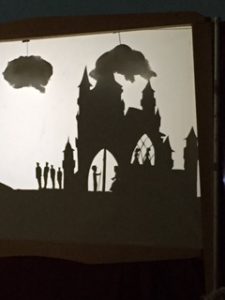 For our play this year, the 7th graders and I did something completely different.
For our play this year, the 7th graders and I did something completely different.
Waldorf 7th Grade Play
7th grade is a very inward year. Generally, seventh graders are more self-conscious, self-absorbed and inwardly focused than any other year, and this is certainly true for my crew of 25. As my students are so preoccupied with themselves and each other, I often feel like the Charlie Brown teacher, spouting out instructions in a garbled language that my students do not speak.
Given this inward turn, I knew that producing a traditional play would be very challenging, if not downright impossible. How do you ask a group of students to confident display themselves onstage, knowing that they already feel uncomfortably onstage every minute of their lives?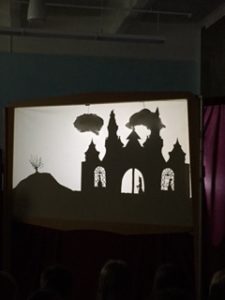
My solution was to produce a puppet play. The students appeared before the audience only briefly to play some introduction music, but the rest of the drama was performed by puppets that the students and I made together.
I chose two traditional folk tales (Anansi’s Funeral and The Fisherman and his Wife) that the students were already familiar with, which gave them the reflective experience of looking back over their time at our school and reconnecting with childhood one last time. Presenting these simple little stories also meant that the 7th graders could think of their performance as a gift for the younger students at our school, making it an even less intimidating experience.
For the Anansi story, the students and I made marionette puppets with styrofoam bodies and needle-felted faces. Making those puppets was the most challenging part of this experience. I had never made anything like this before and it took a lot of trial and error to determine what we were going to do. In the end, our puppets were a constant struggle, and we were repeatedly reattaching parts (even during the performance.) Despite the challenges, though, the students were able to give a lot of life to the puppets and I found the whole production quite endearing.
For the Fisherman and His Wife, the students created the story with shadow puppets. Our school owns a large shadow puppet screen that we set up. The half of the class that worked on this play was incredibly independent and had a clear vision for how they wanted to present the play. They ended up moving the scenery on and off stage as the fisherman “walked” to and from the lake. Their cutout scenery was remarkable and elicited oohs and ahhs from the audience.
Perhaps the best thing about this production was that it allowed some of my quietest, shyest students to take lead roles. And though I anticipated this possibility when I decided on a puppet play, I didn’t actually cast any of the roles myself. The students just got working on the puppets and they decided together who would speak which parts (usually it was based on the puppet they were working on.) The class somehow naturally landed on assigning the lead roles to quiet (but industrious) students.
Now that the performances are over, I feel so satisfied with our Waldorf 7th grade play and with the students’ work during our play block. I’m realizing that this play was about so much more than a performance. The work of this play was in the build-up — making the puppets, working together to create the scenery, writing the script, assigning the parts. The performances were completely secondary.
The experience has me reflecting even more on the purpose of the Waldorf class play. Why do we do class plays? To put on a spectacular show to impress parents? Certainly not. It’s all about the learning, and there is so much to learn from producing a play with 25 of your best friends.

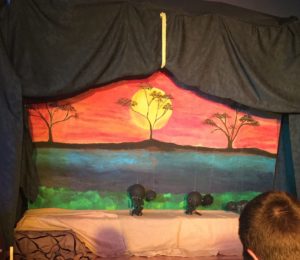
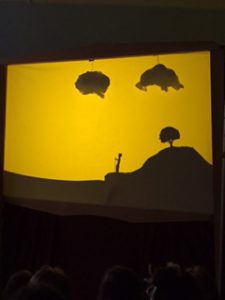
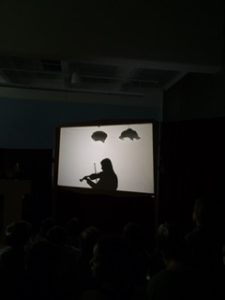



Leave a Reply